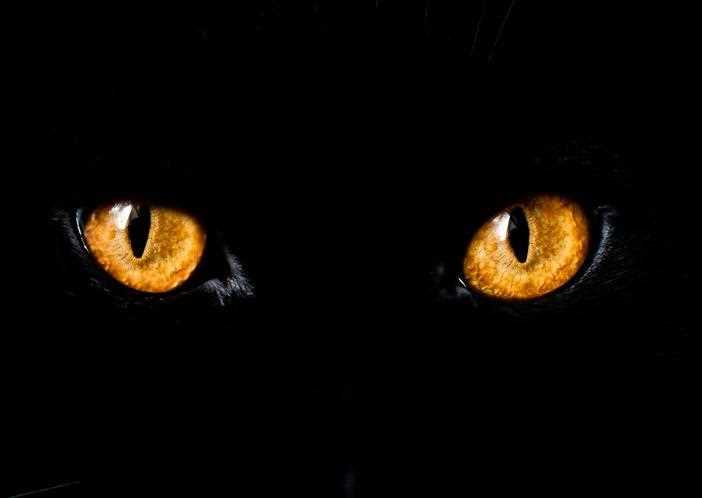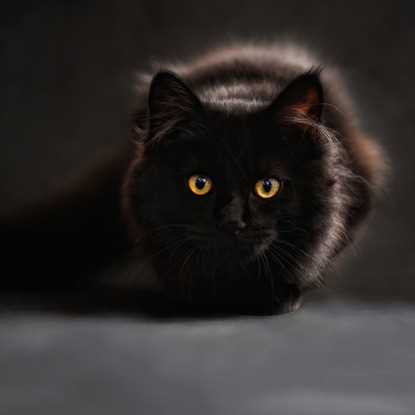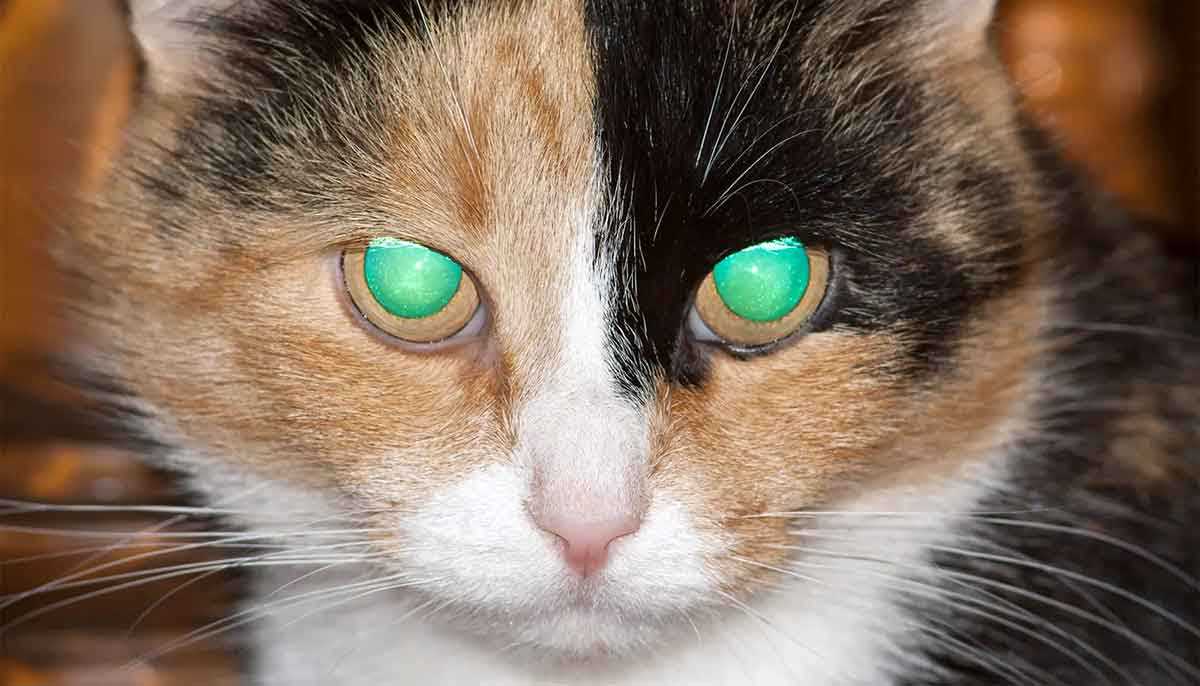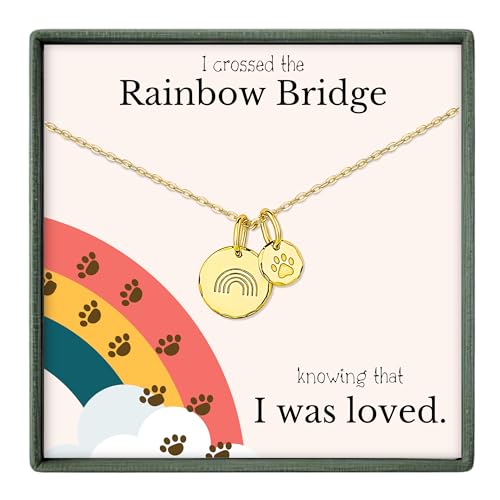



Did you know that the shimmering effect in my fellow furry companions occurs due to a special layer behind their retinas called the tapetum lucidum? This reflective layer enhances vision in low light, allowing us to see better during nighttime adventures. It’s like having built-in night vision goggles!
When light hits this layer, it reflects back through the retina, amplifying the light that enters the eye. This unique adaptation helps in hunting and navigating in dimly lit environments, giving a striking appearance that captivates humans and animals alike. If you’ve ever spotted that mesmerizing glint in the night, now you know the science behind it!
For pet owners, understanding this fascinating aspect can enhance the bond with their companions. Observing how we perceive the world can offer insights into our behaviors and instincts. So, next time you see a flash of brilliance in the twilight, remember it’s not magic–it’s biology at work!
Why Do Felines’ Orbs Shine at Night?
When light hits my peepers just right, they reflect it like a tiny lantern! This fascinating effect comes from a special layer behind my retina called the tapetum lucidum. It acts like a mirror, bouncing light that passes through my retina back into the eye, giving me an advantage in low-light conditions.
This ability allows me to see much better than humans when the sun goes down. My unique genetic makeup enhances this feature, making my vision sharp and my movements stealthy during twilight. Other critters, like dogs and certain animals, possess similar traits, but each species has its own twist on this reflective magic.
In dim environments, you might notice that my gaze can appear to shimmer or change colors. This is due to how the tapetum interacts with various light sources. For example, a flashlight or car headlights can create an eye-catching display that looks almost otherworldly!
While my glowing orbs might seem eerie, they are a marvelous adaptation for survival. Whether hunting or exploring, this trait ensures I navigate the night with grace and precision.
The Role of Tapetum Lucidum in Night Vision

For optimizing your nocturnal adventures, understanding tapetum lucidum is key. This unique layer located behind the retina enhances low-light vision by reflecting light back through the photoreceptors, essentially giving that extra chance to capture available light. It’s like having built-in night-vision goggles!
How Tapetum Lucidum Works

This reflective layer contains cells filled with a substance that bounces light, allowing for increased sensitivity in dim conditions. When light enters, it hits the tapetum and reflects back, providing another opportunity for those light rays to be absorbed. This mechanism significantly boosts visibility, making it easier to navigate at night.
Benefits for Predatory Behavior

For those of us who enjoy hunting in low light, this adaptation is invaluable. The enhanced sight not only assists in spotting prey but also helps in avoiding potential dangers. While making sure to find tasty snacks, like can cats eat bonito flakes, I can also be aware of my surroundings, ensuring a safe and successful night out.
Understanding how tapetum lucidum functions can also help in assessing activities in cooler climates. Knowing how much cold can cats tolerate is crucial for planning those nighttime escapades, ensuring comfort while exploring the wonders of the night.
How to Protect Your Feline’s Vision During Nighttime Activities

Always keep your environment well-lit. Use outdoor lighting or flashlights while exploring at night. This helps me spot hazards that could harm my delicate sight.
Provide a safe space indoors. Designate areas free of clutter where I can roam without risking injury. Comfortable spots allow me to navigate confidently.
Invest in reflective collars or harnesses. Bright colors make it easier for you to spot me in low light. Plus, they can prevent accidents with cars.
Limit outdoor time during peak darkness. Late-night adventures can be risky. Opt for early evening outings when there’s still some natural light.
Regular vet check-ups are a must. Routine eye examinations can catch any potential issues before they become serious. My health is paramount!
Engage in interactive play indoors. Toys that mimic prey encourage my instincts without risking my safety outside. This keeps me entertained and safe.
Monitor my behavior. If I seem hesitant or avoid certain areas, it might indicate a problem. Always pay attention to changes in my habits.
Consider using cat-friendly night vision goggles. Some products are designed for pet safety, allowing me to explore without compromising my sight.
Did you know that the shimmering effect in my fellow furry companions occurs due to a special layer behind their retinas called the tapetum lucidum? This reflective layer enhances vision in low light, allowing us to see better during nighttime adventures. It’s like having built-in night vision goggles!
When light hits this layer, it reflects back through the retina, amplifying the light that enters the eye. This unique adaptation helps in hunting and navigating in dimly lit environments, giving a striking appearance that captivates humans and animals alike. If you’ve ever spotted that mesmerizing glint in the night, now you know the science behind it!
For pet owners, understanding this fascinating aspect can enhance the bond with their companions. Observing how we perceive the world can offer insights into our behaviors and instincts. So, next time you see a flash of brilliance in the twilight, remember it’s not magic–it’s biology at work!
Why Do Felines’ Orbs Shine at Night?
When light hits my peepers just right, they reflect it like a tiny lantern! This fascinating effect comes from a special layer behind my retina called the tapetum lucidum. It acts like a mirror, bouncing light that passes through my retina back into the eye, giving me an advantage in low-light conditions.
This ability allows me to see much better than humans when the sun goes down. My unique genetic makeup enhances this feature, making my vision sharp and my movements stealthy during twilight. Other critters, like dogs and certain animals, possess similar traits, but each species has its own twist on this reflective magic.
In dim environments, you might notice that my gaze can appear to shimmer or change colors. This is due to how the tapetum interacts with various light sources. For example, a flashlight or car headlights can create an eye-catching display that looks almost otherworldly!
While my glowing orbs might seem eerie, they are a marvelous adaptation for survival. Whether hunting or exploring, this trait ensures I navigate the night with grace and precision.
The Role of Tapetum Lucidum in Night Vision

For optimizing your nocturnal adventures, understanding tapetum lucidum is key. This unique layer located behind the retina enhances low-light vision by reflecting light back through the photoreceptors, essentially giving that extra chance to capture available light. It’s like having built-in night-vision goggles!
How Tapetum Lucidum Works

This reflective layer contains cells filled with a substance that bounces light, allowing for increased sensitivity in dim conditions. When light enters, it hits the tapetum and reflects back, providing another opportunity for those light rays to be absorbed. This mechanism significantly boosts visibility, making it easier to navigate at night.
Benefits for Predatory Behavior

For those of us who enjoy hunting in low light, this adaptation is invaluable. The enhanced sight not only assists in spotting prey but also helps in avoiding potential dangers. While making sure to find tasty snacks, like can cats eat bonito flakes, I can also be aware of my surroundings, ensuring a safe and successful night out.
Understanding how tapetum lucidum functions can also help in assessing activities in cooler climates. Knowing how much cold can cats tolerate is crucial for planning those nighttime escapades, ensuring comfort while exploring the wonders of the night.
How to Protect Your Feline’s Vision During Nighttime Activities

Always keep your environment well-lit. Use outdoor lighting or flashlights while exploring at night. This helps me spot hazards that could harm my delicate sight.
Provide a safe space indoors. Designate areas free of clutter where I can roam without risking injury. Comfortable spots allow me to navigate confidently.
Invest in reflective collars or harnesses. Bright colors make it easier for you to spot me in low light. Plus, they can prevent accidents with cars.
Limit outdoor time during peak darkness. Late-night adventures can be risky. Opt for early evening outings when there’s still some natural light.
Regular vet check-ups are a must. Routine eye examinations can catch any potential issues before they become serious. My health is paramount!
Engage in interactive play indoors. Toys that mimic prey encourage my instincts without risking my safety outside. This keeps me entertained and safe.
Monitor my behavior. If I seem hesitant or avoid certain areas, it might indicate a problem. Always pay attention to changes in my habits.
Consider using cat-friendly night vision goggles. Some products are designed for pet safety, allowing me to explore without compromising my sight.
Did you know that the shimmering effect in my fellow furry companions occurs due to a special layer behind their retinas called the tapetum lucidum? This reflective layer enhances vision in low light, allowing us to see better during nighttime adventures. It’s like having built-in night vision goggles!
When light hits this layer, it reflects back through the retina, amplifying the light that enters the eye. This unique adaptation helps in hunting and navigating in dimly lit environments, giving a striking appearance that captivates humans and animals alike. If you’ve ever spotted that mesmerizing glint in the night, now you know the science behind it!
For pet owners, understanding this fascinating aspect can enhance the bond with their companions. Observing how we perceive the world can offer insights into our behaviors and instincts. So, next time you see a flash of brilliance in the twilight, remember it’s not magic–it’s biology at work!
Why Do Felines’ Orbs Shine at Night?
When light hits my peepers just right, they reflect it like a tiny lantern! This fascinating effect comes from a special layer behind my retina called the tapetum lucidum. It acts like a mirror, bouncing light that passes through my retina back into the eye, giving me an advantage in low-light conditions.
This ability allows me to see much better than humans when the sun goes down. My unique genetic makeup enhances this feature, making my vision sharp and my movements stealthy during twilight. Other critters, like dogs and certain animals, possess similar traits, but each species has its own twist on this reflective magic.
In dim environments, you might notice that my gaze can appear to shimmer or change colors. This is due to how the tapetum interacts with various light sources. For example, a flashlight or car headlights can create an eye-catching display that looks almost otherworldly!
While my glowing orbs might seem eerie, they are a marvelous adaptation for survival. Whether hunting or exploring, this trait ensures I navigate the night with grace and precision.
The Role of Tapetum Lucidum in Night Vision

For optimizing your nocturnal adventures, understanding tapetum lucidum is key. This unique layer located behind the retina enhances low-light vision by reflecting light back through the photoreceptors, essentially giving that extra chance to capture available light. It’s like having built-in night-vision goggles!
How Tapetum Lucidum Works

This reflective layer contains cells filled with a substance that bounces light, allowing for increased sensitivity in dim conditions. When light enters, it hits the tapetum and reflects back, providing another opportunity for those light rays to be absorbed. This mechanism significantly boosts visibility, making it easier to navigate at night.
Benefits for Predatory Behavior

For those of us who enjoy hunting in low light, this adaptation is invaluable. The enhanced sight not only assists in spotting prey but also helps in avoiding potential dangers. While making sure to find tasty snacks, like can cats eat bonito flakes, I can also be aware of my surroundings, ensuring a safe and successful night out.
Understanding how tapetum lucidum functions can also help in assessing activities in cooler climates. Knowing how much cold can cats tolerate is crucial for planning those nighttime escapades, ensuring comfort while exploring the wonders of the night.
How to Protect Your Feline’s Vision During Nighttime Activities

Always keep your environment well-lit. Use outdoor lighting or flashlights while exploring at night. This helps me spot hazards that could harm my delicate sight.
Provide a safe space indoors. Designate areas free of clutter where I can roam without risking injury. Comfortable spots allow me to navigate confidently.
Invest in reflective collars or harnesses. Bright colors make it easier for you to spot me in low light. Plus, they can prevent accidents with cars.
Limit outdoor time during peak darkness. Late-night adventures can be risky. Opt for early evening outings when there’s still some natural light.
Regular vet check-ups are a must. Routine eye examinations can catch any potential issues before they become serious. My health is paramount!
Engage in interactive play indoors. Toys that mimic prey encourage my instincts without risking my safety outside. This keeps me entertained and safe.
Monitor my behavior. If I seem hesitant or avoid certain areas, it might indicate a problem. Always pay attention to changes in my habits.
Consider using cat-friendly night vision goggles. Some products are designed for pet safety, allowing me to explore without compromising my sight.









